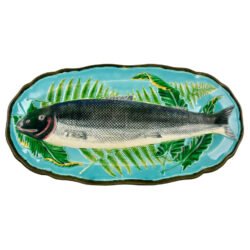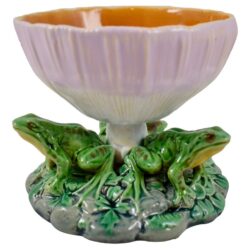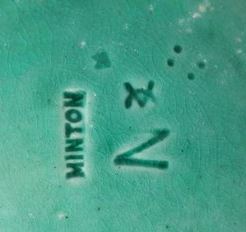Dating Wedgwood & Minton
By using the charts below along with the charts provided on this web site’s page outlining the English Registry mark,
dating Wedgwood and Minton is somewhat easy to accomplish.

Wedgwood Majolica Salmon Platter
Date Marked 1877
Wedgwood Date Marks




Minton Majolica Frog and Mushroom Bowl,
Date marked 1867
Minton Date Marks
Thomas Minton opened his factory in Stoke in 1796, producing earthenware majolica, bone china, and Parian porcelain. He popularized the Willow pattern, quickly becoming a major source of 19th Century dinnerware.
Minton Majolica was created by Joseph Leon Francois Arnoux, who was appointed art director in 1848. He developed a majolica pottery based on the work of Bernard Palissy, whose works were popular in the 16th Century. Arnoux used a sturdy, thick bodied clay coated in an opaque white glaze, and over painted with brightly colored lead based glazes. This pottery was exhibited at The Great Exhibition of 1851.



Chart of impressed Minton date cyphers
for the years 1842-1942.
Impressed date cypher for the year 1867.
Minton printed marks used on majolica
and non-majolica wares.

